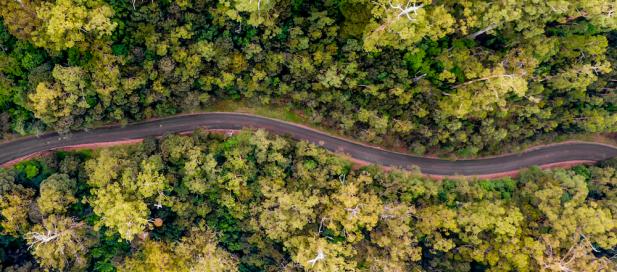
The Victorian State of the Environment (SoE) 2018 Report is the first attempt in Australia to apply the UN Sustainable Development Goals (SDGs) [hyperlink] to state of environment reporting at the state level. “The State of Environment 2018 Report is the start of our journey to rewire and bring coherence to the system so that the UN SDGs frame environmental monitoring and reporting in Victoria,” says Commissioner for Environmental Sustainability Dr Gillian Sparkes. “I see the SDGs as the missing link in monitoring and reporting progress towards sustainable development.”
The SoE 2018 report is the beginning of Victoria’s journey to apply the UN SDGs for statutory environmental reporting. “Putting the United Nations’ Sustainable Development Goals under the microscope to determine which are the most relevant to environmental reporting in Victoria is a crucial step in achieving meaningful, high quality and transparent reporting, says Minister for Energy, Environment and Climate Change, The Hon. Lily D'Ambrosio MP.
“Our understanding of how the SDGs can best be applied to deliver practical outcomes for Victoria’s environment will continue to evolve and develop over time. The SoE is a good start but there is much more work do,” says Dr Sparkes. The SDGs provide an international reporting framework to bring uniformity and a common language to reporting across the state, while still maintaining local independence to report on indicators of importance at a regional scale. “We are aligning Victoria with international environmental reporting frameworks,” says Dr Sparkes. The transition to the SDGs for state of environment reporting is an acknowledgment of the need to report not just on the state of the environment but also on the benefits that society derives from it. “Victoria is taking the lead,” says Dr Sparkes.
The 17 SDGs are referred to throughout the report, demonstrating how the Victorian Commissioner for Environmental Sustainability; Department of Environment, Land, Water and Planning (DELWP); Minister for Energy, Environment and Climate Change the Hon Lily D’Ambrosio MP and a range of environmental stakeholders are working to align Victoria with international environmental reporting frameworks.
The Commissioner, Dr Sparkes says “there are four critical aspects of the SDG framework that make it highly relevant for SoE reporting. The SDGs provide:
- a pre-prosecuted framework for reporting across complex and disparate areas of social, economic and environmental policy
- a framework that is internationally agreed and widely supported
- a common language for measuring progress against diverse goals and targets
- broad support from across business, government and community.”
Many agencies and individuals collect information about the state of Victoria’s environmental assets (including land and biodiversity, forests, water, marine and coasts, air and climate). The introduction of state-wide indicators, nested in an international reporting framework, will better enable linkages between relevant statutory environmental reports in Victorian legislation so that we continue to improve the coherence and quality of environmental policy and conservation, management and protection outcomes. Ultimately, as alignment of SDG assessments and SoE reporting is refined during the 2019-2023 and subsequent reporting cycles, this consolidation will produce a State-level reporting regime of statutory environmental reports that “better talk to each other and the community”, says Dr Sparkes.
Early analysis for SoE 2018 found that Victorian Government agencies in the environment portfolio currently do not collect sufficient socio-economic data for many of the relevant SDGs to be assessed. To report effectively on the SDGs in the future, data acquisition processes will need to be broadened to include individuals and agencies which have not traditionally contributed to state of the environment reporting. “Getting the information we need to report against the SDGs will require a rethink on how and what data we collect across the Victorian environment portfolio and more broadly. I know first-hand that there is a strong appetite by government to implement this change.”
This expanded reporting regime will require:
- broadening of the definition of conventional data inputs
- supporting investment in innovative and creative data acquisition methods
- relationships with new data partners (both organisations and individuals)
- augmentation of current indicators and metrics, and corresponding data requirements, for each SDG (both quantitative and qualitative data) in consultation with experts in the respective disciplines.
Transitioning to the SDGs as the operating framework for SoE reporting in Victoria will require more than data collection reform. “Sense-checking of policy coherence” with government and community partners will be central to maintaining adaptive management, driving systemic change and supporting decision making at the State level over the next decade.
